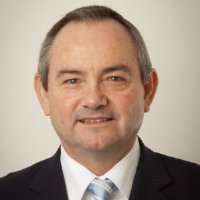Where is it going, what can it achieve, and what does the future promise the user?
Wednesday, 2nd September 2020
The future of Hybrid Fibre Coax (HFC) is very important for Australia’s National Broadband Network (NBN), with HFC passing more than 3 million premises. In this presentation I will attempt to describe a potential future for the HFC, driven by the CableLabs’ “10G project”, leading to DOCSIS 4.0. I will outline the stages in an NBN upgrade and some of the likely barriers to implementation. All this will be set in a context of changing end-user requirements and evolving network capabilities.
Today, the change in the way people consume content has put pressure on traditional television providers to reconsider the way they offer channels. Increasingly, customers are calling for unbundling and the opportunity to pay for only the channels they want. At some point, people will make that decision of ‘I can get everything I want (in streaming) and no longer need to have 180 channels of which I only watch 10’. This decline of Cable TV per se isn’t a new story, but what has started to take hold is a change in narrative inside the industry.
The COVID crisis has accelerated the trends of network users working from home (or anywhere), of growth in peer-to-peer video services, and of end-users being creators of content as well as consumers of content. Coupled to this is the introduction of 5G wireless, which adds further competitive capabilities to meet the needs of end-users. While wireless broadband will become ubiquitous with 5G, the fixed-line access networks, including HFC, can “keep ahead” in delivering raw throughput, both downstream and upstream. Over the years, with all the technological advances we have seen in cable, operators have continued to add more spectrum to their cable networks. These latest technological advances in DOCSIS 4.0 now provide us with the opportunity to rethink how we look at HFC network design. We recognize that cable has not only a long life left, but a long useful life ahead of it. In order to take advantage of the potential capacity increase that is available in DOCSIS 4.0, we will need to evolve from our traditional outside plant designs.
This event is provided in partnership with the Victorian IEEE Section Communications Society. IEEE members are invited to consider joining TelSoc and supporting the voice of Telecommunications within Australia and the region: https://telsoc.org/membership. IEEE members can register for free via Eventbrite: https://www.eventbrite.com.au/e/the-future-of-hybrid-fibre-coaxial-cable-network-technology-tickets-117880049401.
The event will be held via Zoom. Zoom joining details will be supplied to all registered attendees as the event approaches. TelSoc and IEEE look forward to your attendance at this informative seminar!
Please note that a recording and presentation media are now posted below. The recording kicks off in earnest at around the 60 second mark. The PDF presentation media file contains a copy of the slides, followed by a second copy of the slides with accompaning speaker notes and references.
Date and Time
Wed, 2 Sep 2020
12:30 - 13:45 AEST
Location
Presenter(s)

Managing Director, C-COR Broadband Australia Pty Ltd
John has over 45 years experience in the Radio, IT and Telecommunications, and HFC CATV industries, with more than fifteen years in direct engineering/support roles in Radio, Voice, Data and HFC networks including both Hardware and Software solutions, and more than thirty years in Senior Management/Executive and Executive Director roles.
This experience has included both local and multinational experience with the RAAF, Wandel & Golterman, Dataplex, Philips Public Telecommunications Systems, and C-COR Inc., C-COR Broadband Australia Pty Ltd, where he has worked in Australia and AsiaPacific as Managing Director and Regional Director. C-COR Broadband now operates and has registered subsidiary offices in Singapore, Taiwan and Pakistan, and has a Sales Office in India.
Following the management buy-out of C-COR Broadband Australia in 2006, John accepted the CEO role offered, becoming the head of his own company. He provides management and operational control, defining and mapping the strategic direction of the company.
John holds a Diploma of Engineering (Telecommunications); a Diploma in Technical Teaching; a Bachelor of Education Studies; a Diploma in Business Administration; is a Member of the Australian Institute of Company Directors; a Fellow of the Australian Institute of Management (now IML), and is a member of TelSoc. Previously a member of The Society of Cable Telecommunication Engineers (SCTE Australia).
